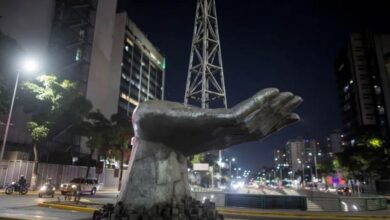Drug trafficking: The growing Latin American business
While the shipment of coca from Colombia to the United States increases, other South American countries become more involved in this business

Leer en español: Narcotráfico: El creciente negocio latinoamericano
According to a report by Revista Semana, Peru, Bolivia, Ecuador, and Colombia have been the nations that most cultivate and export narcotics to Europe, United States, and Asia. Despite the campaigns of their respective governments, crops have increased in the last decade. Mainly, in Colombia, there has been an increase in these crops. For this reason, the Secretary of State of the United States, Rex Tillerson, on his last visit to the country, spoke of mutual support to destroy criminal organizations, adding that drug trafficking is a challenge for both nations.
Along with production, the number of drug cartels has also grown. After the persecution of the Colombian capos, and contrary to what is thought about their extinction, they have expanded. Those who were small drug traffickers quickly became the drug dealers most wanted by the DEA in Latin America.
The global distribution business is currently managed mainly between Mexico and Colombia, with the difference that Mexican bosses want a large part of the crops, routes, distribution, and sales to be handled without the need of intermediaries. In a report of the Revista Semana, an anti-narcotics police officer stated that "… Cartels such as Sinaloa, the Gulf, the Pacific, or Jalisco New Generation send their people to Colombia and today they negotiate directly with anyone and impose their conditions".
The war between cartels is now unleashed inside the Mexican Republic and not with its Colombian partners. In Mexico, especially, the cartel of Jalisco New Generation, the Sinaloa Cartel and the Zetas operate. Zetas do business with the Oficina de Envigado in Antioquia with the objective of monopolizing the market for laboratories, transportation, and distribution abroad.
What other countries are involved in drug trafficking?
Both Cuba and Venezuela have entered IGNORE INTO drug trafficking through the use of so-called "mules", taking advantage of their high levels of poverty and economic need. In Cuba, kilos of coca are given to Cubans as part of payment to get to Miami. Likewise, Venezuelans are used to take the drug from Colombia to the other countries of Central and South America.
The drug cartels have also managed to penetrate the most intimate spheres of local governments. The nephews of the president of Venezuela, Nicolás Maduro, are currently sentenced to 18 years for drug trafficking in the United States. Additionally, investigations are being carried out to members of the Venezuelan government such as Diosdado Cabello and vice president Tareck El Aissami. Presumably, these officials charge the cartels for the passage through their nations.
The strategy of drug trafficking has degenerated from buying high government officials, going through its military forces, and reaching the poorest neighborhoods. These areas are the origin of the distribution, becoming a business difficult to end.
In Brazil, according to the federal police, the favelas are known to be inhabited by a population of limited resources and crime. The bands like "Comando da Capital" has expanded to Paraguay with its business and wave of terror. "Comando Vermelho" and "Familia do Norte" also become the largest distributors of drugs, making the country a point of local distribution.
In Central America, gangs like the "Mara Salvatrucha" continue to dominate the criminal business. The band has become a fearful cartel in Honduras, Guatemala, and El Salvador.
Furthermore, Argentina and Chile are now the preferred routes to facilitate the laundering of assets by Brazilian cartels such as the "Comando Vermelho". During 2017, this band was seized fifteen tons of cocaine estimated at more than 150 million dollars.
In Colombia, the "Clan del Golfo" is the most powerful drug trafficking cartel in South America, allying itself with the "Sinaloa Cartel". This alliance, according to the DEA, is the one that exports the majority of narcotics to the United States.
The most wanted drug traffickers by the United States Department of Drugs, DEA, are:
- Ismael Zambada García, alias "El Mayo" or "El del Sombrero", who is the current leader of the Sinaloa Cartel in Mexico.
- Rafael Caro Quintero, founder of the Guadalajara Cartel, alias "Narco de narcos".
- Nemesio Oseguera Cervantes, "El Mencho", is the leader of the Jalisco New Generation Cartel.
- María Teresa Osorio de Serna, with several aliases: "María Teresa Correa", "Iris Conde", "Teyer Washington" and "Gloria Bedoya", from the disseminated Cali Cartel.
Latin American Post | Luis Alfonso Fernández
Translated from “ Narcotráfico: el creciente negocio latinoamericano”





